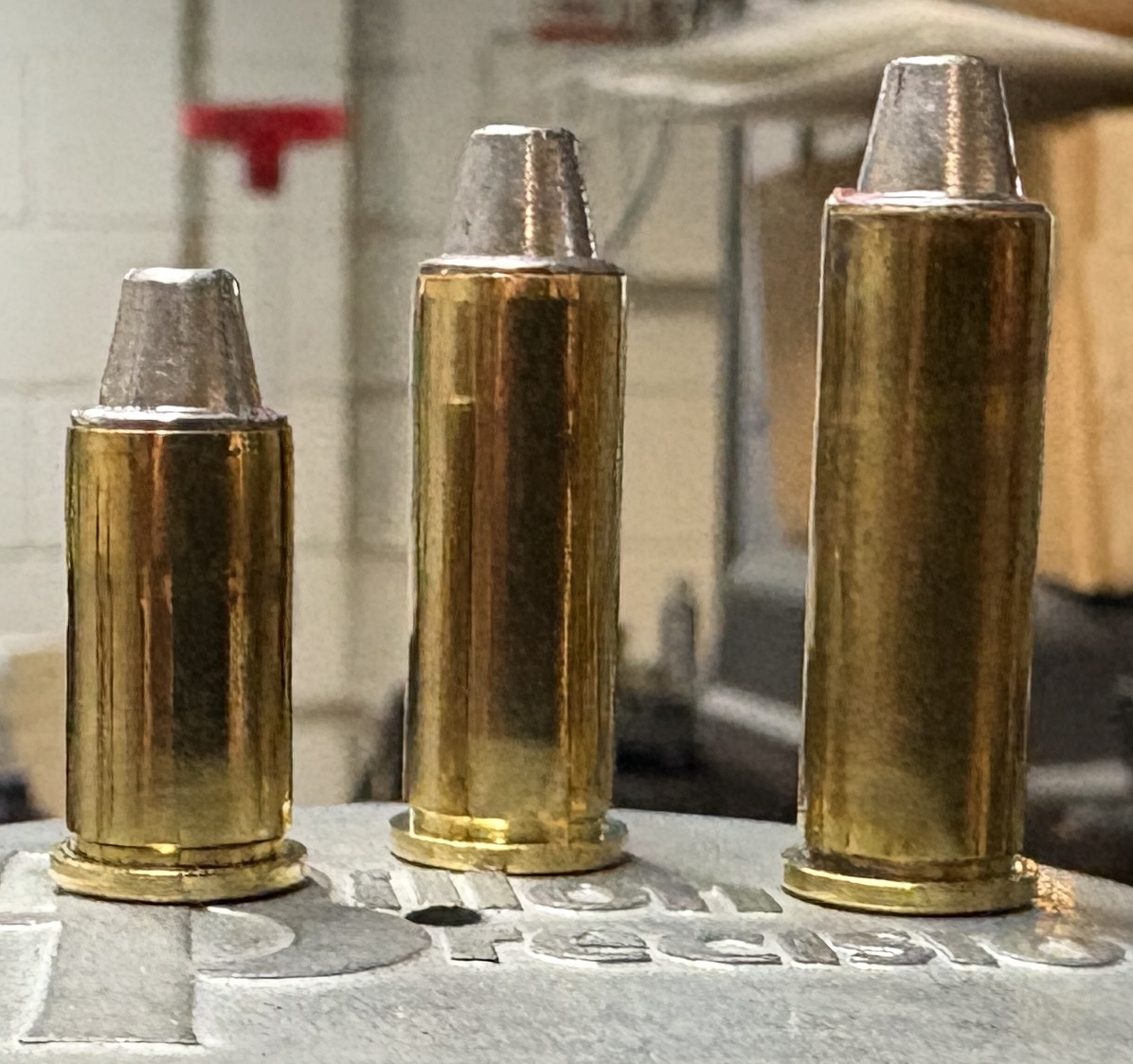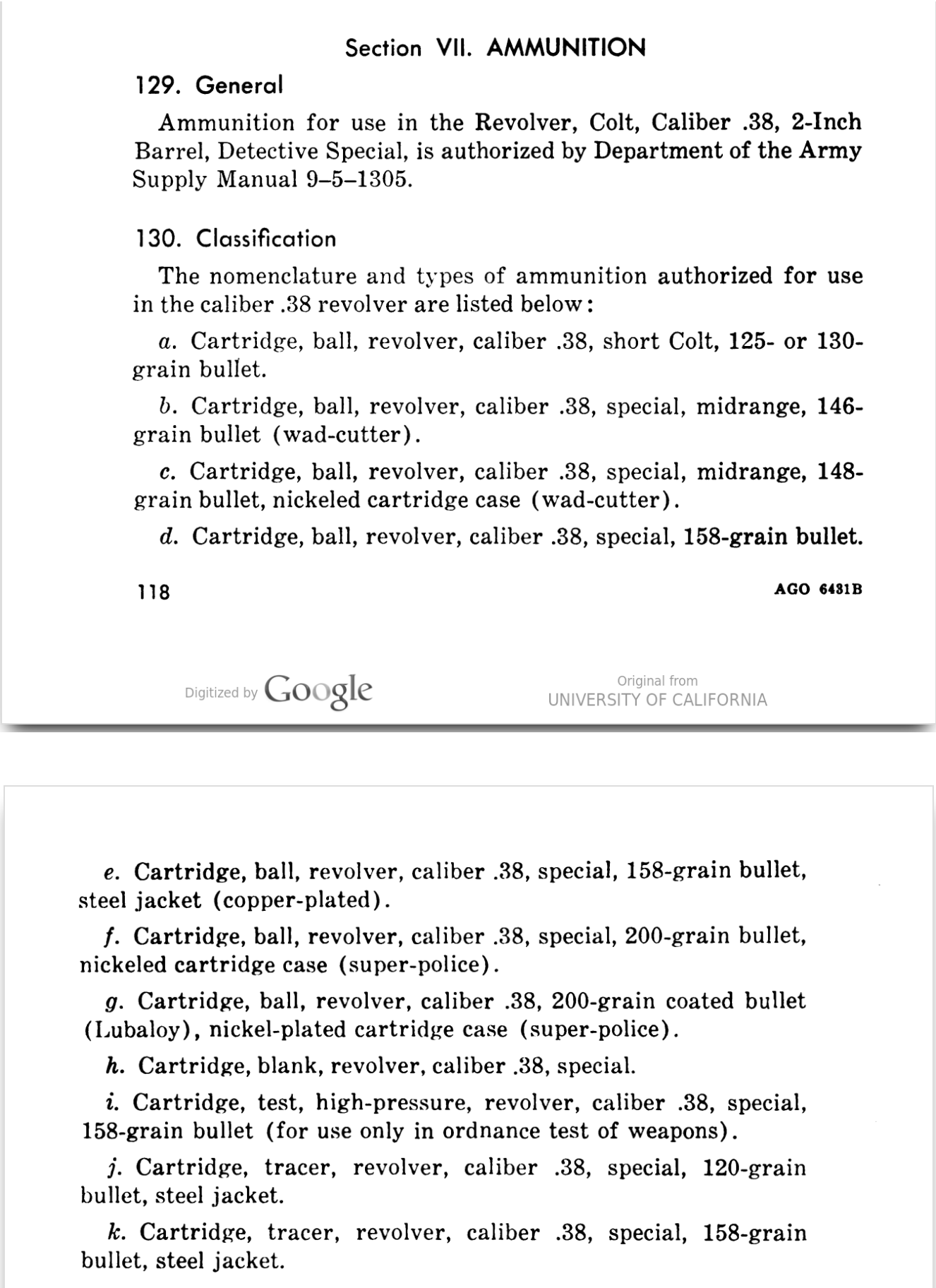The Killer Bee Project: Introduction
Current (2025) CMP Service Revolver rules are silent with regard to style or weight of projectile to be used for the match. So long as the revolver is chambered “from 9mm/.38 Special to 45,” the shooter is free to select either a lead, coated lead, or jacketed bullet in whatever weight they choose in whatever profile they choose. This is quite unlike the NRA Distinguished Revolver ammunition requirement, where a 38 Special, 158 grain round nose or semi-wadcutter bullet, is de jour.
As a result of the wide latitude in the CMP rules, I started working on what I have been calling “The Killer Bee Project.” Initially, the hope was to create a new load that would do three things:
- Be accurate.
- Be (very) low-recoil.
- Appropriate for new shooters.
In general, none of these goals are surprising. The first item is the de facto standard for choosing your ammunition. The next two items, while certainly not necessary, are “nice to haves.” My interest in the second two stems from not only the fact that juniors and competitors with joint damage, strength, or medical issues would appreciate having a low recoil load to practice and compete with; but also would potentially make it possible for them to compete in the first place. Another benefit from low recoiling loads is that they give the shooter a bit more opportunity to see the sights during firing, which helps shot calling development.
No doubt the criticism here would be that 38 Special 148 grain wadcutters would solve for all of the above, are (mostly) readily available store bought, and reloading isn’t strictly necessary to achieve good enough accuracy. These are all fair points to make, and certainly may influence and factor into your decisions around shooting CMP Service Revolver matches. Do what makes sense for you.
As the initial work on the experiment got underway, which began by choosing the 38 Short Colt case (hence the name “Killer Bees” due to the diminutive size of the completed round) for the parent round, research was done to determine what sort of load development would need to be completed along with reading across the internet to see if anyone was using what is an otherwise obsolete case. In so doing, I came across this article which discussed using the case for some of the action disciplines, like ICORE and USPSA. The problem those shooters are looking to solve is how to shave off reloading time using a shorter case (the case could clear the cylinder on ejection faster than a longer one) but still being able to make the various power factor requirements. Neither of these are constraints in our use case; there is no reload on the clock and there is no power factor minimum in our matches.
 |
|---|
| L-R: 38 Short Colt, 38 Long Colt, 38 Special. Loaded with The Cast Bullet Shop #M38-100SWCFB |
You are probably wondering about the reason for the initial selection of the 38 Short Colt case- and the answer is simple, though two-fold:
1) There is the question of what sort of service ammunition was available for issue to soldiers for their service revolvers. One resource, the field manual FM 23-35 Pistols and Revolvers, indicates the availability of 38 Short Colt ammunition with either 120 or 130 grain bullets to those soldiers who were issued the 38 Colt’s Detective Special. How many of either the ammunition or revolver that would have been available for issue is another matter entirely. And then there is the question, “for what purpose,” would 38 Short Colt ammunition be issued for? Training/low recoil seems a likely reason. What doesn’t seem likely is that the 38 Short Colt ammunition was leftover from when the Colt Navy revolvers had been issued after the Civil War. And also, strangely, there is no spot on the list for the 38 Long Colt, which was the revolver round up to, and famously used in, the Philippine War at the turn of the century. In any event, the 38 Short Colt was ammunition that have been issued to soldiers around 1960, putting use of this round well into the modern age.

2) It is the smallest case that will work in a 38 Special or 357 Magnum, which is probably what 95%+ of revolvers are chambered for on the line today. Why pick a small case? To avoid inconsistent ignition. It is a bit of a pet peeve, but many older cartridges were designed around black powder as the propellent, which required more room in the case (for an equivalent amount of energy) than the smokeless varieties of today require. As such, there is a great deal more room for the powder to shift around in the case, which depending on the powder and primer, may not always sound or feel the same, which is jarring while shooting. Removing interior space by selecting a smaller cartridge case with its reduced volume, may eliminate off sounds and inconsistent recoil using smokeless propellent. Of course, this cartridge selection generates another potential problem: that of case/chamber fit.
If there is any consensus, it seems there is no consensus on whether and to what degree using a shorter case in a longer chamber does accuracy wise. There are many comments across many different forums that run from there isn’t a material difference to yes, Martha, this matters. One thing research turned up that is universally agreed on, however, was that using shorter rounds- say a 38 Special in a 357 Magnum- in longer chambers meant that you run the risk of not being able to use the longer round in the chamber due to the fouling having moved back from the cylinder throat into the chamber proper. It isn’t anything that cleaning won’t fix, but it does bear mentioning, if only so you don’t panic when you swap shells around and find the longer ones don’t seat quite right.
For completeness, here is a thread of a person indicating that minimizing headspace is key to best accuracy. And here is another where someone believes that it doesn’t matter at all.
When there seems to be wildly divergent views on any particular topic, it generally means that there really isn’t enough data available to determine one thing versus another. After all, everyone is entitled to their own opinion, but not their own facts. If it were fact that accuracy was degraded by using the shorter case in a longer chamber, then the entire experiment would run afoul of requirement #1 -be accurate. And that, on its face, didn’t feel true to my experience (such as it is).
At about this point in my research, what I had originally wanted to achieve had turned into a quest for an answer to this bigger question. So, how to answer it? First, it was time to go shopping. I had KKM build a 1911 pattern 38 Special barrel with 1:18 twist; in this way, I’d be able to test for any effect using my barrel tester using this twist rate as an analog for an S&W revolver barrel. This accomplishes at least one item that seem to be important: it removes any question of having a “bad/sour chamber” negatively impacting results. The test here is whether case length matters vis a vis fixed chamber size, and not how well a revolver is (or isn’t!) built. One chamber and barrel is easier to clean than 6 chambers and barrel, too.
The next item was to pick up brass cases. I have plenty of 38 Special cases, so I ordered 38 Short & Long Colt from Starline, which kept all cases the same brand. Not sure that this matters, but it seemed prudent to do in order to eliminate the potential for different brand cases to affect the results.
Next came bullets. In order to properly compare the three parent cases appropriately, the same bullet would need to be tested across all of the cartridges. What also might be a good sub-experiment is to see if the barrel preferred either round nose or semi-wadcutter bullets- something many people also disagree on. I selected two: Bear Creek 125 RN, and The Cast Bullet Shop 100 SWC. The CBS bullet was selected because it was relatively close in wight to the older style 80 (1851 Colt Navy) and 93-95 grain historical loads. The Bear Creek was selected because its weight and profile would be comparable to other 38 SC and LC historical loads, while also being a good candidate for the 38 Special. Last, two runs across the cases is better than one, and may prove insightful in case the results from each run do not correspond.
The final step was to select the powder and primers to be used. Today, we are so spoiled for choices in smokeless powder; if you can’t find one that does what you want to do, you aren’t trying hard enough. The selection would need to account for being able to be used across the three cartridges; again, to help with consistency and comparison. Which also raises another problem: in what way should these loads be similar?
Part of the difficulty with this experiment is how to characterize each of the various loads and whether or not they can really be compared. Is it velocity or pressure that should be compared? What about neither, while keeping close to historical loads that may be considered optimum? All three seem like reasonable, valid approaches. The later option seems difficult to form consensus on: what loads for each cartridge would be considered “optimum?” That leaves pressure and velocity. Of the two, velocity is easy enough to measure using a chronograph. Pressure data, on the other hand, is not nearly so easy to capture.
This problem notwithstanding, when discussing the effect of chamber length on accuracy, no one is generally concerned with a difference in pressure between cartridges, and by extension, velocity. The concern is solely and usually stated as mechanical fit of cartridges to chambers is better or more successful when cartridges are paired with the proper chamber dimensions. With that in mind, the first test between the cartridges will focus on velocity corresponding equally across the cases and bullets. The second run will use software to model the charges to equivalent pressures across all three cartridges.
For the initial test using velocity as a constant, a suitable quantity of Winchester Small Pistol primers was selected from a single lot. The powder selected for use in all three cartridges is Winchester 231. W231 is a well documented powder and is able to be used in all three cases with currently available load data; this feature will also come in handy for using modeling software to approximate pressures for each of the three.